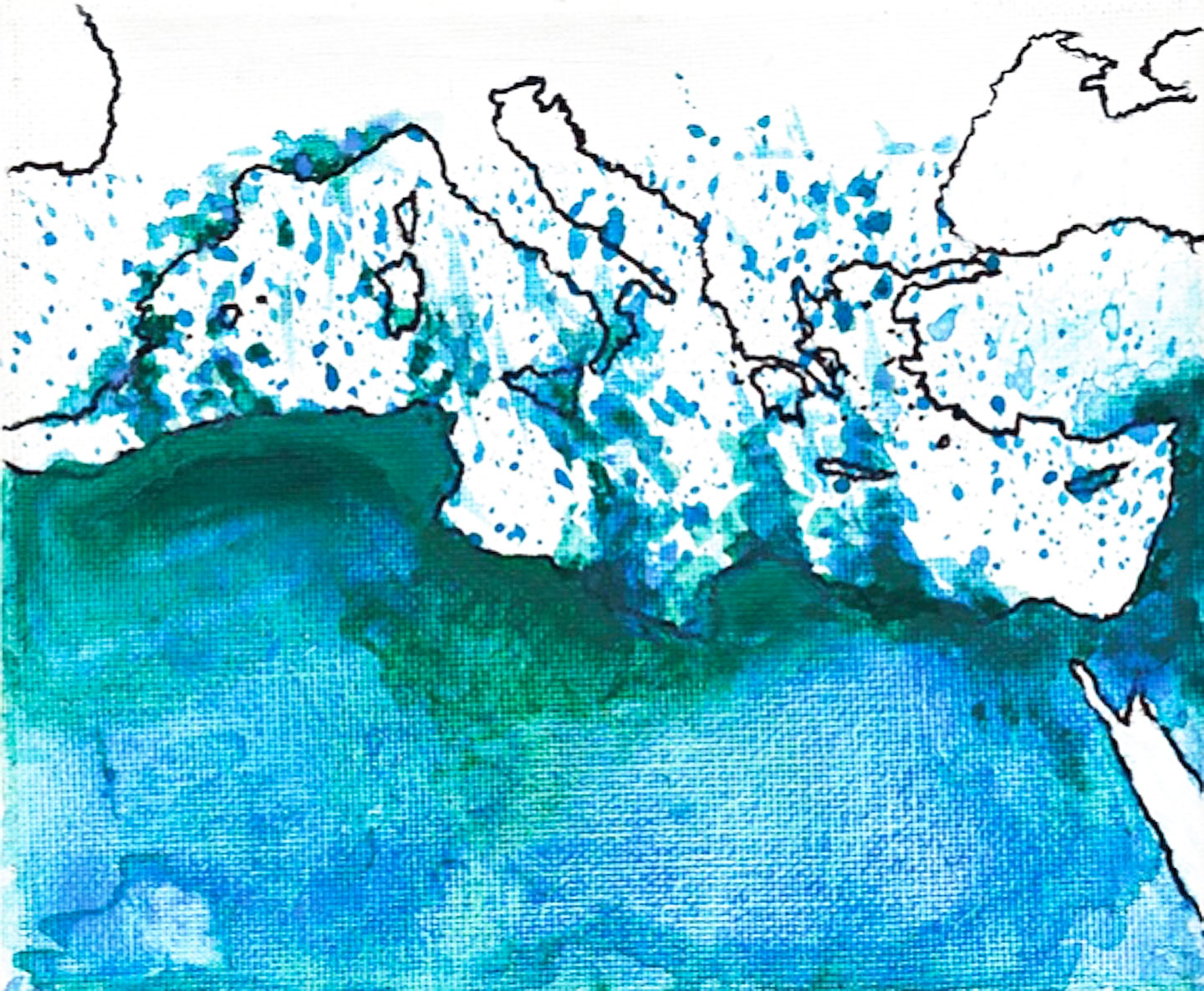Philip Steinberg and Kimberley Peters, “Wet Ontologies, Fluid Spaces: Giving Depth to Volume through Oceanic Thinking,” Environment and Planning D: Society and Space 33, no. 2 (2015): 248.
Fernand Braudel, Il Mediterraneo (Bompiani, 1948).
Franco Farinelli, “Il Mediterraneo, la differenza, il differimento,” Geotema 12 (1998): 57–62.
Paolo Giaccaria and Claudio Minca, “The Mediterranean Alternative,” Progress in Human Geography 35, no. 3 (2010): 346.
See →.
Achille Mbembe, On the Postcolony (University of California Press, 2001).
See the photo here →.
W. J. T. Mitchell, Seeing Through Race (Harvard University Press, 2012), 127.
Matej Povse in conversation with the author, December 13, 2019.
Judith Zijlstra and Ilse Van Liempt, “Smart(phone) Travelling: Understanding the Use and Impact of Mobile Technology on Irregular Migration Journeys,” International Journal of Migration and Border Studies 3, no. 2–3 (2017): 174–91.
Bram Frouws, Melissa Phillips, Ashraf Hassan, and Mirjam Twigt, “Getting to Europe the Whatsapp Way: The Use of ICT in Contemporary Mixed Migration Flows to Europe (June 2016),” Regional Mixed Migration Secretariat Briefing Paper, 2016.
Alexander R Galloway, Gaming: Essays on Algorithmic Culture (University of Minnesota Press, 2006).
Alex Sager, “Migration Crises and the Ethics of Representation,” Oxford Handbook of Migration Crises, ed. Cecilia Menjívar and Immanuel Ness (Oxford University, 2019), 592.
Achille Mbembe, “Necropolitics,” Public Culture 15, no. 1 (2003): 11–40. See also Mbembe, On the Postcolony.
Laura Lo Presti, “Terraqueous Necropolitics: Unfolding the Low-Operational, Forensic and Evocative Mapping of Mediterranean Sea Crossings in the Age of Lethal Borders,” ACME: An International Journal for Critical Geographies 18, no. 6 (2019): 1347–67.
Thom Davies, Arshad Isakjee, and Surindar Dhesi, “Violent Inaction: The Necropolitical Experience of Refugees in Europe,” Antipode 49, no. 5 (2017): 1263–84.
Dana Diminescu, “The Connected Migrant: An Epistemological Manifesto,” Social Science Information 47, no. 4 (2008): 568.
Maribel Casas-Cortés, Sebastian Cobarrubias, Charles Heller, and Lorenzo Pezzani, “Clashing Cartographies, Migrating Maps: The Politics of Mobility at the External Borders of E.U.rope,” ACME: An International Journal for Critical Geographies 16, no. 1 (2017): 22.
Paolo Cuttitta,“Inclusion and Exclusion in the Fragmented Space of the Sea: Actors, Territories and Legal Regimes between Libya and Italy,” in Contemporary Boat Migration: Data, Geopolitics and Discourses, ed. E. Burroughs and K. Williams (Rowman & Littlefield, 2018).
Charles Heller and Lorenzo Pezzani, “Liquid Traces: Investigating the Deaths of Migrants at the EU’s Maritime Frontier,” in Forensis: The Architecture of Public Truth, ed. E. Weizman (Sternberg Press, 2014).
See →.
Thomas Nail, “Kinopolitics: Borders in Motion,” in Posthuman Ecologies: Complexity and Process After Deleuze, ed. R. Braidotti and S. Signall (Rowman & Littlefield, 2018), 184.
Mbembe, “Necropolitics,” 40.
Sherry Turkle, Evocative Objects (MIT Press, 2011), 5.
See →.
On “grief activism,” see Maurice Stierl, “Contestations in Death—The Role of Grief in Migration Struggles,” Citizenship Studies 20, no. 2 (2016): 173–91.
David L. Eng and David Kazanjian, Loss: The Politics of Mourning (University of California Press, 2003), 3.
Marta Zarzycka and Bettina Papenburg, “Motion Pictures: Politics of Perception,” Discourse 35, no. 2 (2014): 164.
The phrase “optical unconscious” was used by Walter Benjamin in reference to photography. See Benjamin, “A Small History of Photography,” in One-Way Street (New Left Books, 1972, orig. ed. 1931), 240–57.
Steinberg and Peters, “Wet Ontologies,” 248.
